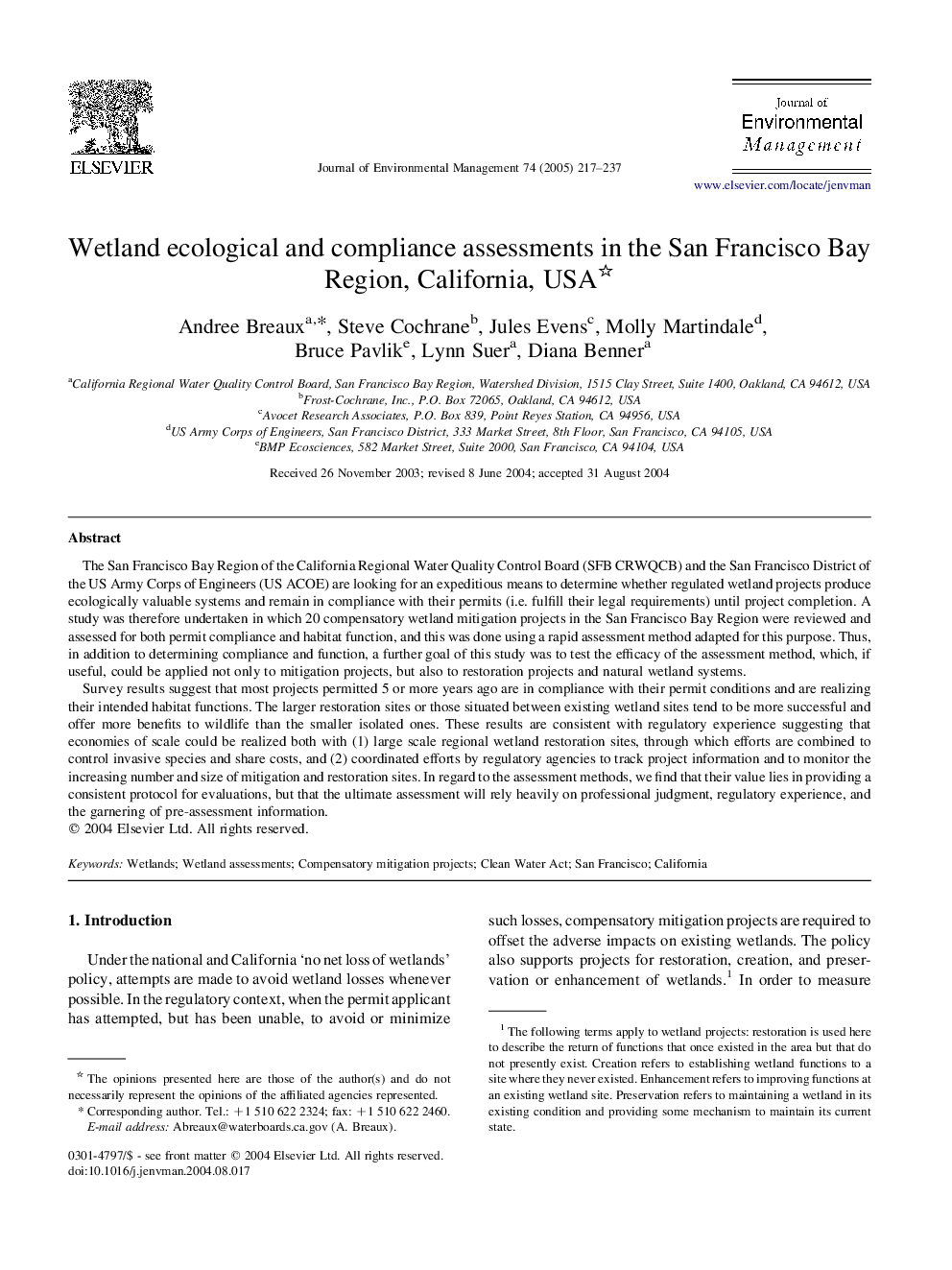| Article ID | Journal | Published Year | Pages | File Type |
|---|---|---|---|---|
| 10505971 | Journal of Environmental Management | 2005 | 21 Pages |
Abstract
Survey results suggest that most projects permitted 5 or more years ago are in compliance with their permit conditions and are realizing their intended habitat functions. The larger restoration sites or those situated between existing wetland sites tend to be more successful and offer more benefits to wildlife than the smaller isolated ones. These results are consistent with regulatory experience suggesting that economies of scale could be realized both with (1) large scale regional wetland restoration sites, through which efforts are combined to control invasive species and share costs, and (2) coordinated efforts by regulatory agencies to track project information and to monitor the increasing number and size of mitigation and restoration sites. In regard to the assessment methods, we find that their value lies in providing a consistent protocol for evaluations, but that the ultimate assessment will rely heavily on professional judgment, regulatory experience, and the garnering of pre-assessment information.
Related Topics
Physical Sciences and Engineering
Energy
Renewable Energy, Sustainability and the Environment
Authors
Andree Breaux, Steve Cochrane, Jules Evens, Molly Martindale, Bruce Pavlik, Lynn Suer, Diana Benner,
